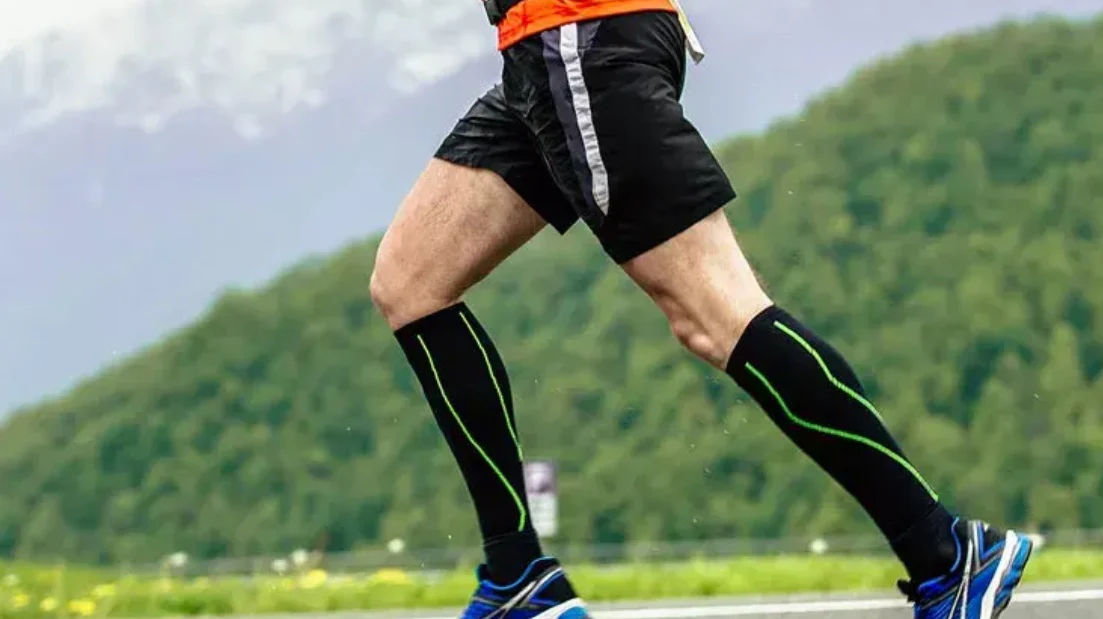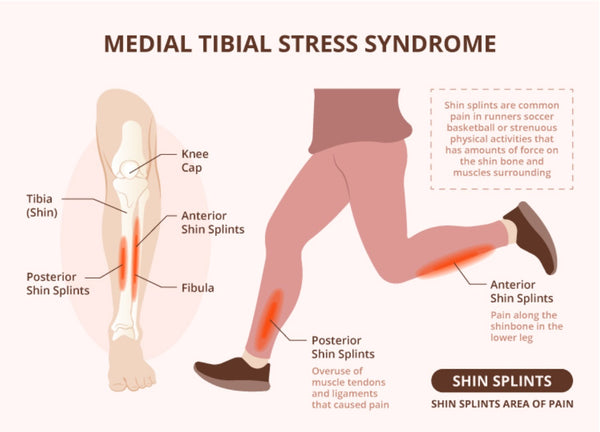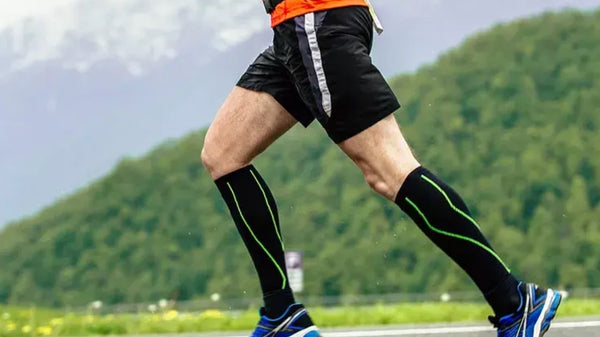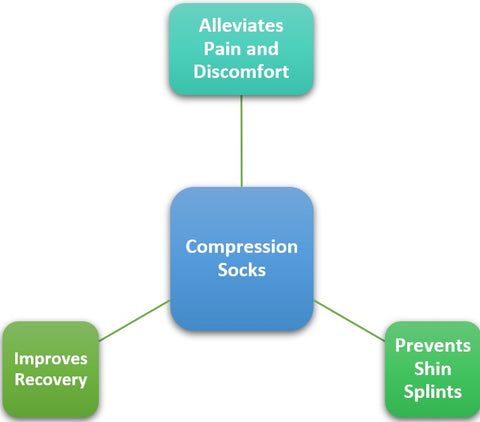
Medically reviewed by Brent Greenberg, MD, DABVLM, FAAFP, RPhS
Shin splints, known medically as medial tibial stress syndrome, are a common affliction for runners, dancers, and active individuals.
In fact, up to 20% of runners experience shin splints, so it is a prevalent condition for people who do high-intensity exercise regularly.
Shin splints are also common for those who suddenly increase their activity levels.
Compression socks are gaining attention as a potential remedy.
But do they really help with shin splints?
In this article, we will explore:
Keep reading to discover how these compression socks may aid your recovery process.
Shin splints, or medial tibial stress syndrome, occur when the shin bone and surrounding muscle tissues become inflamed. Overuse, sudden increases in physical activities, or improper form during intense exercise typically cause this common injury. The condition can lead to sharp pain in your shin bone and calf muscles, requiring proper treatment.

Shin splints present several common symptoms:
These symptoms tend to worsen without proper treatment or adequate rest. Paying attention to these signs can help prevent more severe injuries like stress fractures.

Compression socks work by applying graduated pressure to your legs, which promotes better blood circulation.
This increased blood flow offers several benefits:
Compression socks are an effective treatment option for shin splint recovery, helping you maintain an active lifestyle while reducing the risk of injury. Here are their benefits for managing and preventing shin splints:

Remember: Compression socks are a practical solution for those experiencing shin splint pain, helping you stay active while managing muscle fatigue and preventing further injury.
You can wear compression socks during and after exercise, as well as on your rest days or if you have achy legs at night.
When using compression socks for extended periods or during long physical activities, follow these guidelines:
Remember: If you have a medical condition or chronic shin pain, consult a professional to determine the best compression level and duration.
When selecting the right compression socks for shin splints, consider these key factors:
Remember: Compression socks cover the foot and extend up to the calf, providing full leg support and more compression. By contrast, compression sleeves focus on the calf muscles and are lighter. Therefore, socks are better for overall improved circulation and for preventing foot and ankle swelling. The sleeves are ideal for targeted calf muscle recovery.
While compression socks offer many benefits, they may not be suitable for everyone. If you have blood clots, blood supply issues, or varicose veins, consult a healthcare professional before use.
Be aware of these potential drawbacks when using compression socks:
Compression socks are very helpful in managing shin splints because they improve blood flow and muscle support. Therefore, they offer pain relief, enhance your recovery, and prevent further injury. To harness these benefits effectively:
However, if your shin splints persist or worsen, consult a healthcare provider. You may need to explore further treatment options and ensure there are no underlying issues complicating your recovery.
Proper use and medical guidance can help you continue enjoying an active lifestyle without discomfort.
Can compression socks prevent shin splints from occurring?
Yes, compression socks can help prevent shin splints by reducing muscle tightness and improving blood circulation during physical activities. This added support helps decrease the strain on your shin muscles, lowering the risk of injury, especially during high-impact workouts.
What level of compression is recommended for managing shin splints?
For shin splints, a moderate compression level of 20-30 mmHg is usually recommended. This range offers enough pressure to improve circulation and reduce swelling without being too tight or uncomfortable. Always consult a professional to determine the best compression level for your needs.
How long can I wear compression socks each day?
You can wear compression socks for several hours during activity or recovery. However, avoid wearing them continuously for more than 8-12 hours without breaks. If you experience discomfort or tightness, remove the socks to allow your legs to rest.
Can anyone wear compression socks, or are there conditions that might make them unsafe?
Most people can wear compression socks, but if you have blood clots, poor circulation, or certain medical conditions, consult a healthcare provider first. Wearing compression socks in these cases could worsen your condition without proper guidance.
What other treatments can be combined with compression socks to heal shin splints faster?
To heal shin splints faster, combine compression socks with rest, ice packs, stretching, and proper footwear. Physical therapy and exercises to strengthen your calf muscles can also help. Consult a healthcare provider for a comprehensive treatment plan.
How do I know if my compression socks fit properly?
Your compression socks should feel snug but not too tight. If they leave deep marks on your skin or cause discomfort, they might be too small. Always check a sizing chart and ensure there’s even pressure from your ankle to your calf.